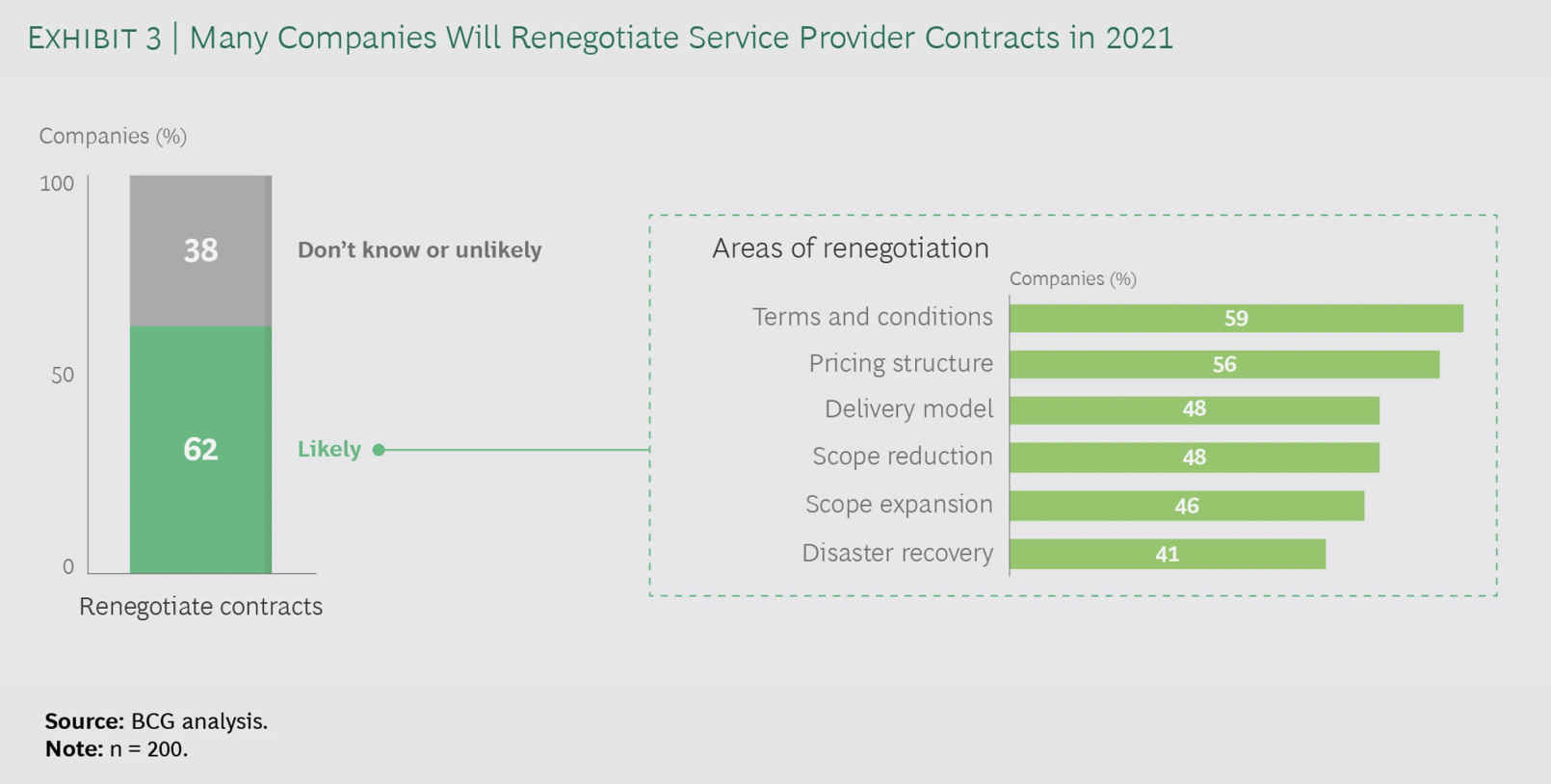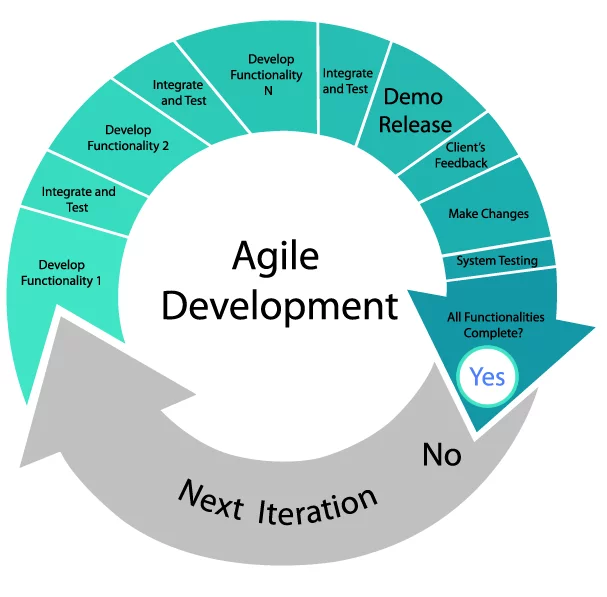With ongoing economic uncertainty, many businesses are looking for ways to cut costs on software development. Software development outsourcing is a time-proven strategy for saving money on development costs, and in this post, we cover some reasons why that is still the case.
However, outsourcing is not a magic bullet. The success of your project depends on many factors. Read on for an updated guide to success in software development outsourcing.
Software development outsourcing is a time-proven strategy for saving money on development costs, and in this post, we cover some reasons why that is still the case. Share on XPre-hire: Confirm that outsourcing is the best option
It may seem obvious, but when deadlines loom and budgets are tight, it is tempting to rely on assumptions and rush into action.
1. Be on top of software development outsourcing trends for your industry.
Staying informed about new technologies and software tools helps prepare you to negotiate and make the best choice among providers.
2. Understand exactly why you are choosing to outsource software development
Establishing a relationship with an outsource provider or building an augmented team takes a lot of time so before you invest in the decision, confirm that outsourcing is the best option in the first place.
Perhaps augmenting your existing team would suffice. To clarify the differences, check out our helpful blog post (only a 4-minute read!) Team Augmentation vs. Outsourcing: What's the Best Approach?
Outsourcing Project Planning Fundamentals- Keep the End in Mind
In any project, success begins with laying the foundation. Below are some tips for setting up your project for success from the beginning.
1. Establish a timeline, budget, and contract parameters.
The first internal task is to answer the questions How long? and How much? What is the proposed schedule and budget? One challenge you may face is the shortage of developers in the market; with top-notch developer talent clocking in at a premium.
Even with the developer shortage, now could be a good time to consider outsourcing. This is why. The Boston Consulting Group (BCG) reported in 2021 that 62% of companies were considering renegotiating their outsourcing contracts.

With continuing economic uncertainty, we can reasonably assume the trend to revisit contract terms and pricing is continuing. Downward pricing pressure from existing customers is good news for companies considering outsourcing for the first time.
Every industry sector is different, but it could mean that providers are cutting more competitive deals. Research rates in your industry to gain negotiating leverage in contract discussions.
Interestingly enough, the Terms and Conditions (T&C’s) were the #1 area of renegotiation, even over price. This could be a clue for first-time outsourcers to pay particular attention to this area.
For example, the hyperscale cloud storage providers (Microsoft, AWS, and Google) routinely expect that their contract documentation will take precedence over other parties in the outsourcing arrangement. Kit Burden, Partner and Global Co-Chair of Technology Sector, DLA Piper, provides more detail about the convergence of cloud and outsourcing contracts in this post.
2. Strong project management is a key fundamental.
Every development team knows that project management is crucial. If you haven’t integrated with an outsourced team before, now is the time to review your existing processes and roadmap the new direction. The details may change depending on the provider you choose, but having a process in place from the start gives you a head start.
3. Present a communication plan from the start.
Consistent frequent communication is the key to keeping a project on time and on budget. Your existing teams already have a communication flow. You can help your team transition to working with outsourced talent by taking the lead in setting expectations for the frequency and content of check-ins. Choose a collaboration model, channel, and scheduling tool that works best for the whole team.
4. Plan the final hand-off to internal teams from the start.
Every contract has a termination date, of course. However, the product will live on with post-market updates, security considerations, and future enhancements. Including a plan from the beginning for handing off the final project to the internal team will make the process smoother because it gives the teams a defined process to work toward.
Choosing Your Outsourcing Partner
Once you have your foundation in place, you are in a strong position to find and negotiate the right outsourcing arrangement. Here are some next steps.
1. Research software outsourcing providers thoroughly
Do your due diligence and research software outsourcing providers before signing on the dotted line. Look into the company’s background, experience, client list, and developer talent as well as their software development processes, to ensure they have the technical chops to handle your project.
2. Leverage Nearshoring as an option
Nearshoring (sometimes called on-shoring) refers to contracting for development services with companies in the same or similar time zones and hemispheres.
What can be a little confusing is that nearshoring is still outsourcing - in that it refers to contracting for work outside of the host company. The difference is nearshoring is the practice of using companies closer to or inside the host company country. For North America, that often means the US, Mexico, or Canada.
In an insightful post for post-pandemic CEOs, the Boston Consulting Group reports the following:
“Companies usually spend most of their outsourcing budgets on critical areas, but they may be more comfortable onshoring, rather than offshoring or investing in in-house capabilities in the future. Forty-six percent of respondents said that they would invest more in developing in-house capabilities, suggesting that onshoring will continue to play a key role.”
At Sharkbyte we have extensive experience helping clients with nearshoring. Be sure to reach out if you have any questions.
3. Keep your project lean with team augmentation
Depending on the product scope and requirements, companies can use team augmentation to temporarily augment existing teams with specific talent sets. Team augmentation is where a company forms a strategic partnership where a third-party IT provider adds specialists to an existing team to increase capacity and efficiency, providing measurable value.
While placements can be brief or long-term, they are usually only for part of the project. To maximize results: Team augmentation is an effective way to use software outsourcing to increase the productivity and efficiency of your software team. Augmentation is especially effective when working with software projects that require a lot of diverse or specialized resources.
Agree on Project Parameters with Your Outsourcing Partner
The more clarity about project parameters you can share with your software development outsourcing partner, the better. Below are some pointers to keep in mind.
1. Set clear expectations, realistic deadlines, and budgets.
When working with outsourced teams, realistic software development project timelines and budgets are important. Clear project guidelines will help to ensure that the software provider can meet all of the requirements for the project on time. It also helps keep costs down and avoid unnecessary delays or cost overruns.
2. Set up a documentation plan.
Every project needs detailed documentation that describes the product to teams and stakeholders. These documents can ensure continuity in transitions or if there is team turnover.
Teams create different types of documents throughout the whole software development lifecycle (SDLC). Documentation includes source information about the product discussed in design documentation, white papers, code comments, and meeting notes.
3. Utilize agile methods for software development.
Agile software development can help to ensure that software projects are completed on time and on budget.

Agile methods key off of incremental software delivery, which allows for easier resource planning and more efficient software development. For a deeper dive, you can check out our Ultimate Guide to Agile Software Development.
4. Develop a software maintenance plan
Implementing a software maintenance plan from the beginning can save time later. A clear program for updating keeps software projects current. It also provides the opportunity to identify problems before they become more significant issues.
5. Implement quality control measures
Quality assurance is essential when it comes to software outsourcing in 2023. Establishing and maintaining a quality control system will help ensure that software projects are delivered on time. Be sure your outsourcing partner is aware of all regulations and required standards for your project.
6. Leverage automation for software development
Automation can streamline software development processes, reducing developer hours and increasing efficiency. Automation helps software outsourcing teams to focus on more complex software development tasks, allowing them to deliver software projects faster and more efficiently.
Moving Ahead
Best practices for outsourcing software development rely heavily on the fundamentals and pre-planning. Are you in the planning stages and hoping to avoid bumps in your roadmap?
At Sharkbyte, we have experience with all aspects of planning outsourcing, nearshoring, and team augmentation. In fact, we specialize in local or nearshoring placements with vetted talent. Contact us today to talk about your team augmentation strategy.
Checklist for Software Development Outsourcing
Pre-hire: confirm that outsourcing is the best option
- Be on top of software development trends in your industry
- Understand exactly why you are choosing to outsource your project
Outsourcing project planning fundamentals
- Establish a timeline budget and contract parameters
- Strong project management is a key fundamental
- Present a communication plan from the beginning
- Plan the final handoff to internal teams from the start
Choosing your outsourcing partner
- Research software outsourcing providers thoroughly
- Leverage near-shoring as an option
- Keep your teams lean with team augmentation
Agree on project parameters with your outsourcing partner
- Set clear expectations realistic deadlines and budgets
- Set up a documentation plan
- Utilize agile methods for software development
- Develop a software maintenance plan
- Implement quality control measures
- Leverage automation for software development



